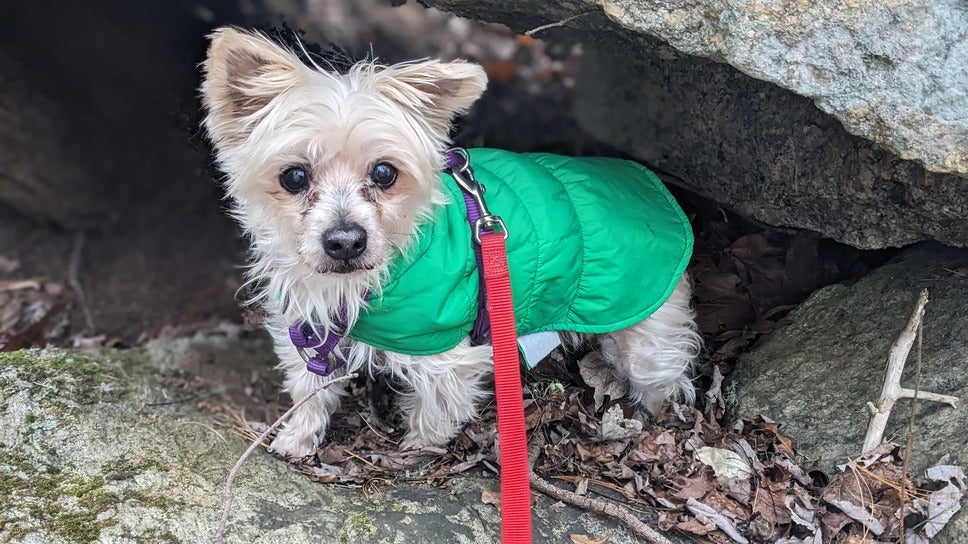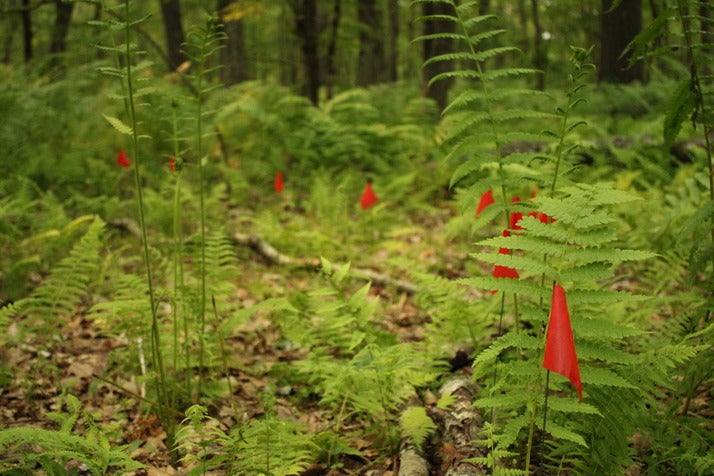The North Woods offer a peaceful place to experience nature for the URI community. People often enjoy hiking, birdwatching, running, dog walking, and mindfulness meditation. There are trail entrances across from the Coastal Institute and adjacent to the intramural athletic fields behind the Flagg Road Lot (Lot 20). Please follow URI parking procedures when planning your visit.
| Do’s | Don’ts |
| Stay on established trails and obey signage. | Camping, fires, and motorized vehicles are prohibited. |
| Keep dogs leashed at all times, and clean waste properly. | Don’t remove trash from historical sites (even if it’s broken glass, rusted metal, etc.) When in doubt, leave it as you found it. |
| Get familiar with Tick Prevention and Poison Ivy Awareness. | Don’t touch or disturb field research equipment, including wooden boards, plastic flagging, or other markers. |
Recreational use is limited to pedestrian travel. Camping, fires, and motorized vehicles are prohibited. Dogs must be leashed at all times. Please be sure to keep furry friends on the trail; to check for ticks during and after your visit; and to clean up after your animals by picking up waste and disposing of it in trash cans outside the North Woods.

As with any forest in New England, ticks and poison ivy are present. To learn about avoiding them, visit our pages on Tick Prevention and Poison Ivy Awareness. One of the most important things you can do to avoid ticks and poison ivy is to stay on established trails. This also reduces impact on the woodland ecosystem.
Do not touch or disturb equipment, flagging, or signage, as they may be in use for research purposes. Field research equipment may look different than you think. “Unconventional” equipment that classes have used before include kiddie pools, wooden boards, and clay models of amphibians. Traditional research equipment includes mammal traps, wildlife cameras, and plastic flagging.
Thank you for adherence to these guidelines, as they ensure the safety of visitors and protect the health of the forest.

